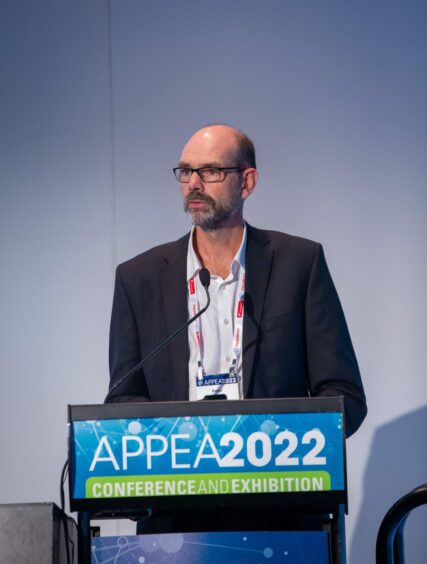
A road map for the future of Australia’s world-leading liquefied natural gas (LNG) exports has shown how the sector can transition to zero emissions with environmental and business advantages.
Speaking at the 2022 APPEA conference in Brisbane, Worley Vice President Energy & Chemicals (Australia East & PNG) Peter Cox told delegates it was a “credible opportunity” for the industry.
“Australia is vying with Qatar and the US to be the top global LNG exporter, with the Australian LNG industry earning around $30 billion annually and employing tens of thousands of people,” he said.
“But where is the LNG industry headed as we move towards a zero emissions global energy economy?”
Cox said mitigating fugitive emissions and flaring; converting carbon dioxide to methane using methanation; electrifying LNG facilities; and using methane pyrolysis at the LNG regasification location to produce clean burning hydrogen and solid carbon, has the potential to be a commercially viable means to export zero emissions energy from Australia.
He said advantages of this included that methane pyrolysis required only a third of the energy required to produce hydrogen compared to electrolysis.
Less capital investment was also required because the LNG export, regasification and gas distribution infrastructure already existed.
Cox added “solid carbon produced can be utilised to improve the economics, contribute to battery development, tyre manufacturing and has the potential to reduce emissions in cement and building materials.”
“This is an opportunity to transform the LNG industry towards zero emissions demonstrating that gas can remain an important and competitive component of the energy mix both now and into the future.”
APPEA acting chief executive Damian Dwyer said the presentation highlighted the industry’s focus on decarbonisation to reduce emissions and improving the investment environment so Australia could capitalise on its competitive advantage.
“Members of the oil and gas industry have already spent over $5 billion on decarbonisation initiatives and the sector is committed to net zero by 2050,” Dwyer said.
“This kind of thinking is welcome for industry delegates to consider and debate the different pathways to reducing emissions.
It also highlights the need for policymakers to get the investment settings right so that Australia can be more competitive and capitalise on its natural advantage and our industry can deliver economically in coming decades.”
Recommended for you
